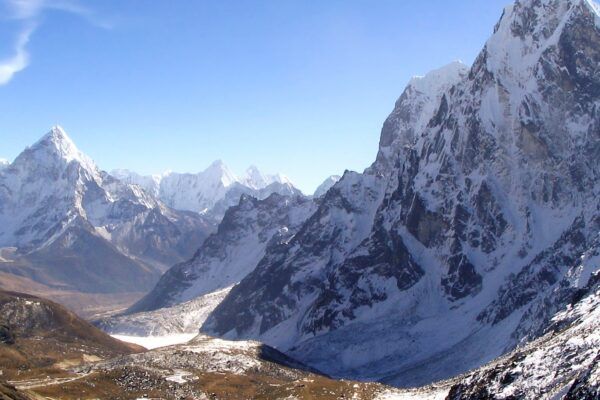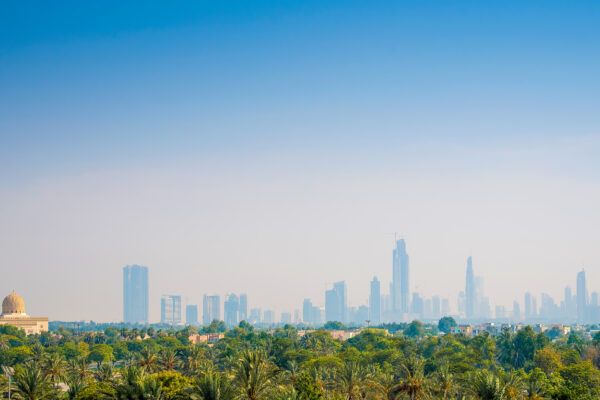The Arctic is warming three times faster than the rest of the planet. Glaciers are melting faster than ever. Monsoons are becoming more unpredictable. So you would expect black carbon to be a key element of the global community’s climate strategy. But it is not.
What is black carbon?
Black carbon, commonly known as soot, is a short-lived climate pollutant and a major component of particulate matter pollution that has both air quality and climate impacts. It is the sooty black material emitted alongside other air pollutants during incomplete combustion. For example, black carbon is emitted from diesel engines, coal-fired power plants, wildfires and other sources that burn fossil fuels, biomass and waste emit black carbon.
Black carbon reduction is important to the global climate agenda:
- Climate mitigation: Black carbon emissions are fuelling Arctic amplification, Himalayan glacier melting and disruptive monsoons. They are a key factor in several climate tipping points.
- Climate adaptation: Black carbon emissions are linked to increased flood risk, food insecurity, extreme heat and environmental injustice. Reducing emissions can build local resilience to a warming climate and these effects are felt strongest closest to its source.
- Health outcomes: Black carbon emissions contribute significantly to air pollution, the largest environmental health problem globally, which is attributed to millions of premature deaths each year.
But emissions of black carbon are not part of any global climate protocol and often go completely untracked. As COP28 gets underway, the world is on thin ice and black carbon is making it thinner.
Alongside the rapid and deep decarbonisation needed to address the climate crisis, we need to get smarter on critical short-lived climate pollutants – the gases and particles that are fuelling global warming and climate extremes, alongside carbon dioxide (CO2). Governments and the global climate community need to take a more strategic and intentional approach to reducing black carbon emissions now.
A solution to multiple crises
Black carbon sits uniquely at the centre of the climate, health and environmental justice nexus. Action to reduce black carbon is an opportunity to join the dots between these interrelated issues. But governments’ progress on indirectly reducing black carbon emissions through existing net zero strategies and clean air plans has been too slow.
Black carbon emissions are rising in many places and not reducing quickly enough in others. More targeted efforts, such as those of the Clean Arctic Alliance, are essential to compliment wider decarbonisation and clean air efforts.
Solutions that reduce black carbon emissions already exist and can be put into action now. These include:
- transitioning to electric light sources across Africa
- supporting community-led forest fire management programmes
- implementing cleaner technologies for brick production
- replacing diesel generators with renewables near the Arctic
All these solutions can have immediate climate and health benefits. Black carbon emissions remain in the atmosphere for just a couple of weeks. So the world will feel benefits of reduced black carbon much more quickly than pollutants like CO2 (which remains in the atmosphere for centuries) or even methane (which remains for about a decade).
Countries must start tracking and reporting their black carbon emissions. In the 2025 global stocktake, countries must set ambitious black carbon emissions reduction targets in their nationally determined contributions. These targets must be separate and additional to what governments have already committed in their net zero plans, building on the work of leading countries such as Chile. Multilateral development banks, development agencies, and other funders need to support actors to set and achieve those targets.
More research to address scientific uncertainties
Aerosols (particles suspended in the air, such as black carbon and organic carbon) affect the climate in different ways to greenhouse gases. They can be both net warming and net cooling. The climate effects of aerosols are key areas of climate science. These uncertainties need to be better understood. We need:
- More observational studies to refine our understanding of the interaction between aerosols and clouds.
- More regional-scale climate modelling to further our understanding of how these pollutants affect complex climate feedback loops and systems across different parts of the world.
- More integrated greenhouse gas and air pollution emissions inventories, as well as more accurate black carbon emissions factors to underpin modelling, target setting and regulation.
The uncertainties around the climate impacts of aerosols need to be overcome as quickly as possible. In the meantime, a plethora of evidence exists on the harm that black carbon emissions have on the climate, the environment and human health. There is clearly a compelling case for action to reduce this overlooked pollutant. Clean Air Fund, Center for Study of Science, Technology and Policy (CSTEP), Berkley Air Monitoring Group and Orbis Air have laid out this case in a new policy brief launched at COP28.
We can’t let uncertainties paralyse us from taking crucial action in a time of crisis. And we can’t plan to mitigate climate change without cutting black carbon emissions and air pollution.

